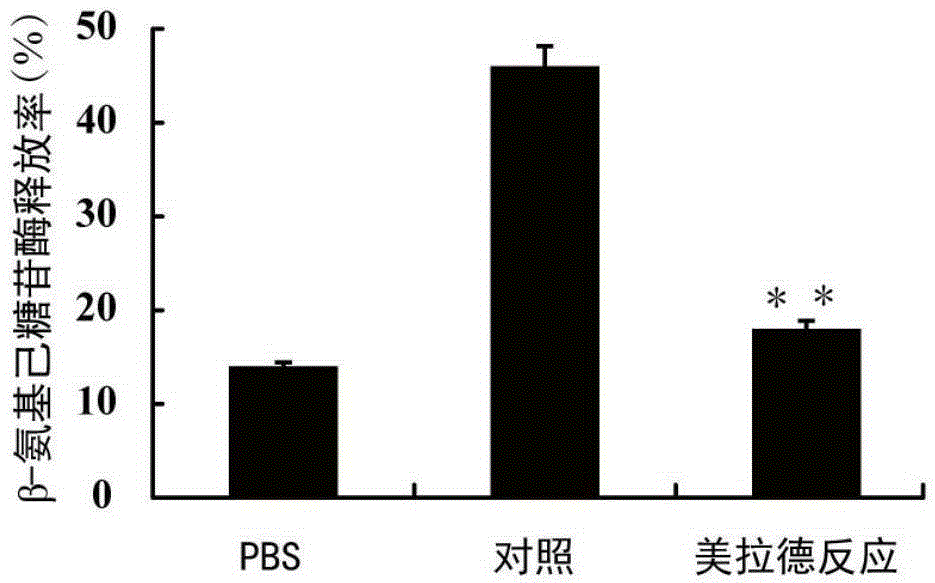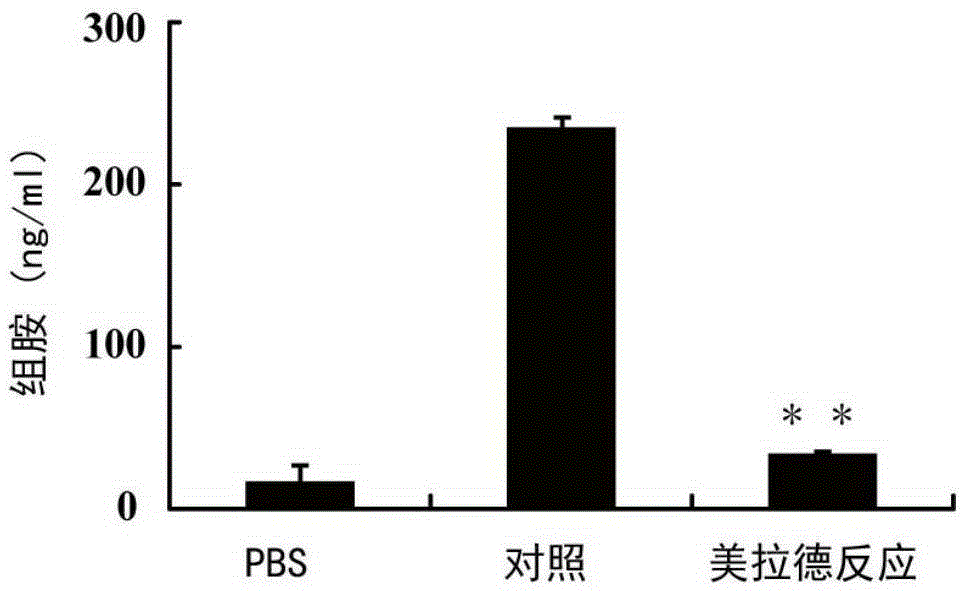Low-allergenicity fish allergen parvalbumin, and preparation method and application thereof
A parvalbumin, hypoallergenic technology, applied in the protein field, can solve problems such as damage to food texture and flavor, and achieve the effect of promoting the formation of flavor substances and retaining immunogenicity
- Summary
- Abstract
- Description
- Claims
- Application Information
AI Technical Summary
Problems solved by technology
Method used
Image
Examples
Embodiment 1
[0032] Example 1: Preparation of hypoallergenic fish allergen parvalbumin and detection of immune activity
[0033] The recombinant parvalbumin expression strain [E.coliBL21(DE3)] (cDNA clone of silver carp parvalbumin and its prokaryotic expression in Escherichia coli, Chinese Fishery Science, 2014) was inoculated into 500 mL LB liquid medium according to 500 μL strain (Containing kanamycin with a final mass concentration of 25 mg / L) and cultured at 37°C. When the OD600 value reached 0.6, IPTG with a final concentration of 1mmol / L was added to induce expression for 4 hours. The collected bacteria were resuspended in 20 mmol / L Tris-HCl (pH 7.5), ultrasonically destructed, centrifuged at 8000 g for 20 minutes, and the supernatant was collected. The recombinant protein was purified using a nickel ion affinity chromatography column (GE, USA). Through SDS-PAGE analysis, the recombinant parvalbumin was highly purified.
[0034] Weigh 0.3g glucose and dissolve in 100mL containing...
Embodiment 2
[0037] Example 2: Preparation of hypoallergenic fish allergen parvalbumin and detection of immune activity
[0038] Take 20g of silver carp white meat and mash it in 5 times the volume of 20mmol / L Tris-HCl (pH8.0) buffer solution, heat at 100°C for 10 minutes, centrifuge at 8000g for 20 minutes, and take the supernatant to obtain paralbumin hot crude Extract. Dissolve 0.3g glucose in 100mL containing 1mmol / L NaHCO 3 Prepare a sugar solution in PBS (20mmol / L, pH7.0), adjust the concentration of the hot crude extract of parvalbumin to 1mg / mL, take 8mL and mix it with the sugar solution in an equal volume, place it at -30°C for 2 hours, and place it in a vacuum freezer After drying for 24 hours, react at 60°C for 3 days, redissolve in 4mL PBS (20mmol / L, pH7.0), and dialyze in this buffer for 24 hours to remove sugar.
[0039] The desugared sample is placed in a 3kD ultrafiltration concentrator tube for centrifugation, and the obtained inner liquid is the hypoallergenic fish all...
Embodiment 3
[0051] Example 3: Analysis of glycosylation sites of hypoallergenic fish allergen parvalbumin
[0052] Take 30 μg of the hypoallergenic fish allergen parvalbumin prepared in Example 1, add 30 μg of LSTD buffer, bathe in boiling water for 5 minutes, and cool to room temperature. Add 200μLUA buffer (8MUrea, 150mM Tris-HClpH8.5) to mix well, transfer to a 30kDa ultrafiltration tube and centrifuge. Add 200μLUA buffer and centrifuge, discard the filtrate. Add 100 μL IAA, shake for 1 minute, incubate at room temperature for 30 minutes in the dark, and centrifuge. Add 100μLUA buffer, centrifuge, repeat 2 times. Add 100 μL 25mM NH 4 HCO 3 , centrifuged, and repeated 2 times. Add 40 μL 25mM NH 4 HCO 3 At the same time, trypsin was added, digested overnight and then centrifuged. Then add 40 μL 25 nM NH 4 HCO 3 , centrifugation, acidification.
[0053] The digested samples were separated by Trap chromatographic column. After the Trap chromatographic column was equilibrated wi...
PUM
 Login to View More
Login to View More Abstract
Description
Claims
Application Information
 Login to View More
Login to View More - R&D
- Intellectual Property
- Life Sciences
- Materials
- Tech Scout
- Unparalleled Data Quality
- Higher Quality Content
- 60% Fewer Hallucinations
Browse by: Latest US Patents, China's latest patents, Technical Efficacy Thesaurus, Application Domain, Technology Topic, Popular Technical Reports.
© 2025 PatSnap. All rights reserved.Legal|Privacy policy|Modern Slavery Act Transparency Statement|Sitemap|About US| Contact US: help@patsnap.com



